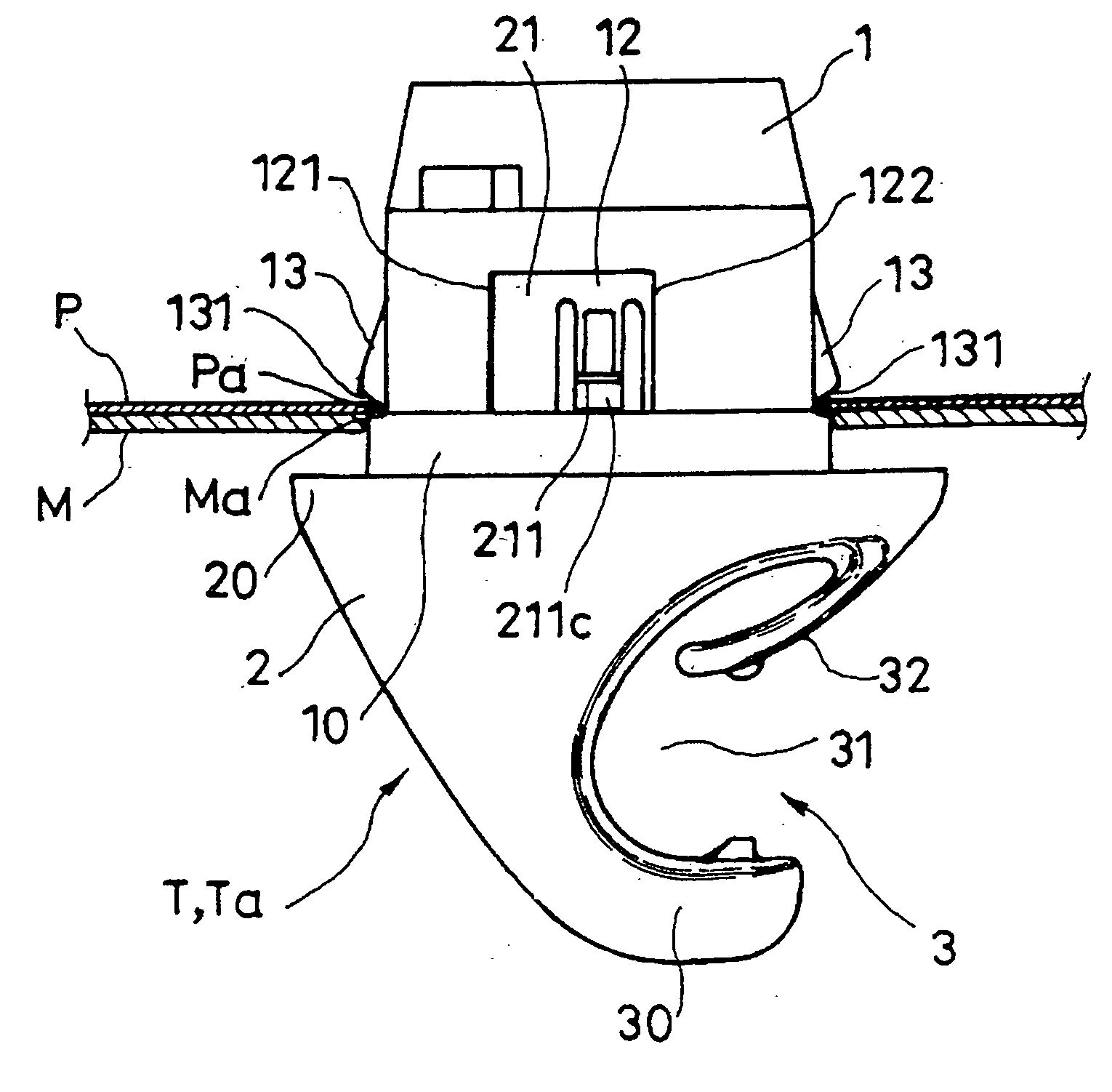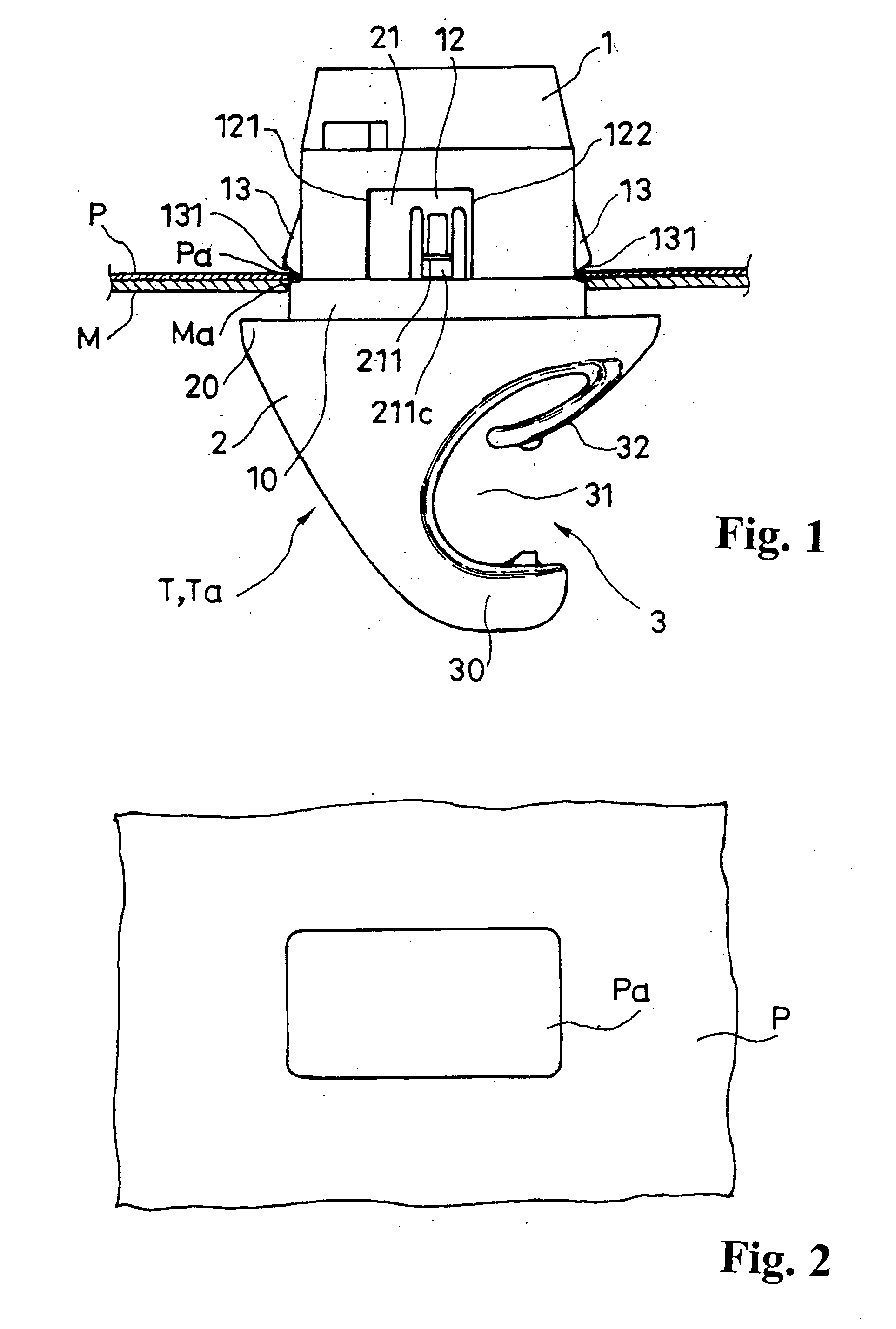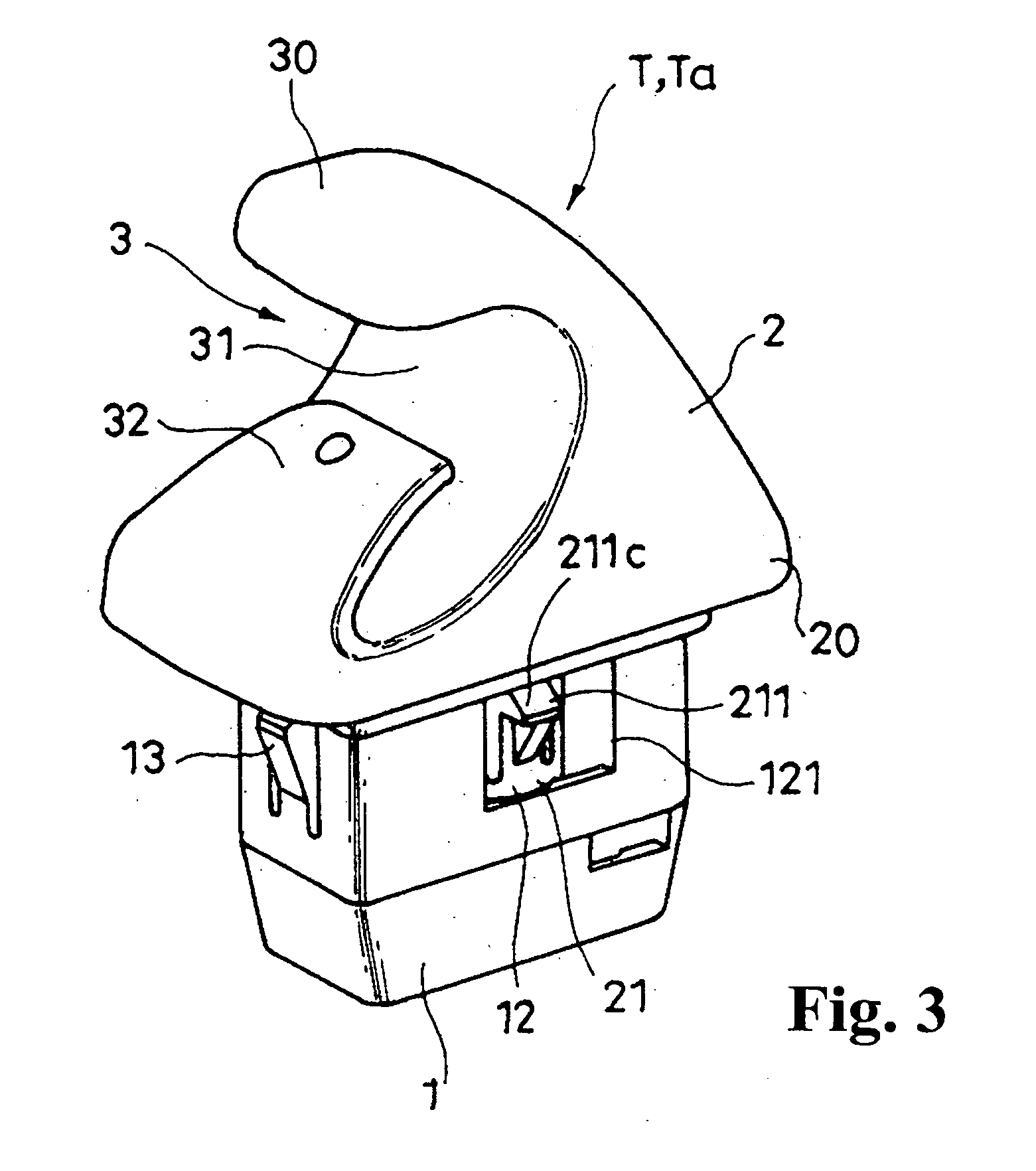[0014] By such constitution, the elastic coupling claw of the male part, which has the leg part inserted into the female part coupled and fixed in the panel hole, can be coupled in the panel hole through the pass-through part of the female part, whereby the male part can be fastened in the panel hole. Also, by rotating the male part thus fastened toward the uncoupled position inside the female part, the elastic coupling claw can be caused to be drawn into the female part, whereby the coupling between the male part and the panel hole is released and the male part can be removed from the panel hole while leaving the female part in the panel hole. Also, because such rotation toward the uncoupled position of the male part is impeded by the striking between the lock surface of the turn lock part and the lock receiving surface of the turn lock receiving part, the male part is not unexpectedly rotated so that the fastened state between the panel hole and the male part is released.
[0015] On the other hand, the rotation of the male part toward the uncoupled position can be assured by releasing the striking between the lock surface and the lock receiving surface by the elastic deformation. Although the elastic coupling claw of the male part is projected outward from the pass-through part of the female part in a state in which it is capable of being drawn into the female part by rotation toward the uncoupled position, because the turn lock part and the turn lock receiving part are formed separately from these elastic coupling claw and pass-through part, and the impeding of the rotation of the male part toward the uncoupled position is not realized by causing the elastic coupling claw to strike against the pass-through part, the elastic coupling claw is not caused to be deformed unreasonably in this rotation. Also, the elastic deformation for this rotation can be made easier to cause, and there is also no need to form a guide surface, or the like, on the elastic coupling claw for guiding the deformation of this elastic coupling claw in a manner so as to decrease the coupling allowance (coupling surface) of this elastic coupling claw.
[0019] In this case, because such elastic piece extends in an arc shape following the direction of rotation of the male part and also has a
fixed length, such elastic piece is deformed smoothly so as to release the striking between the lock surface and the lock receiving surface accompanying rotation of the male part in the coupled position toward the uncoupled position, and the coupling between the male part and the panel hole can be released smoothly.
[0022] Also, in the rotational operation of the male part toward the uncoupled position, the female part is not rotated together inside the panel hole. Also, the coupling between the female part and the panel hole is not released even if the male part rotated to the uncoupled position is pulled out from the female part, and the expected state of fitting into the panel hole can be reproduced easily by inserting the leg part of the pulled-out male part or a replacement male part into the female part thus coupled in the panel hole. Furthermore, attachment to the panel hole by inserting the leg part of the male part into the female part from a state in which only the female part first was fitted into the panel hole also can be done.
[0024] By such clamping tool, by rotating the male part having the clamping part toward the uncoupled position, it can be removed from the panel hole while leaving the female part in the panel hole. In particular, in the case that damage was caused to the clamping part, it can be made
usable as the clamping tool easily by replacing the male part.
[0025] In the attached body or member to the panel hole pertaining to this invention, because it is made such that the impeding of the rotation of the male part toward the uncoupled position in which the coupling of the elastic coupling claw of the male part to the panel hole is released is accomplished by a turn lock part which is provided separately from this elastic coupling claw, there is no occurrence of the inconvenience that occurs when the function of releasably impeding this rotation of the male part is combined in the elastic coupling claw. Also, in the clamping tool pertaining to this invention, replacement of the male part having the clamping part can be performed easily and suitably in the case when damage was caused to the clamping part.
 Login to View More
Login to View More  Login to View More
Login to View More 


